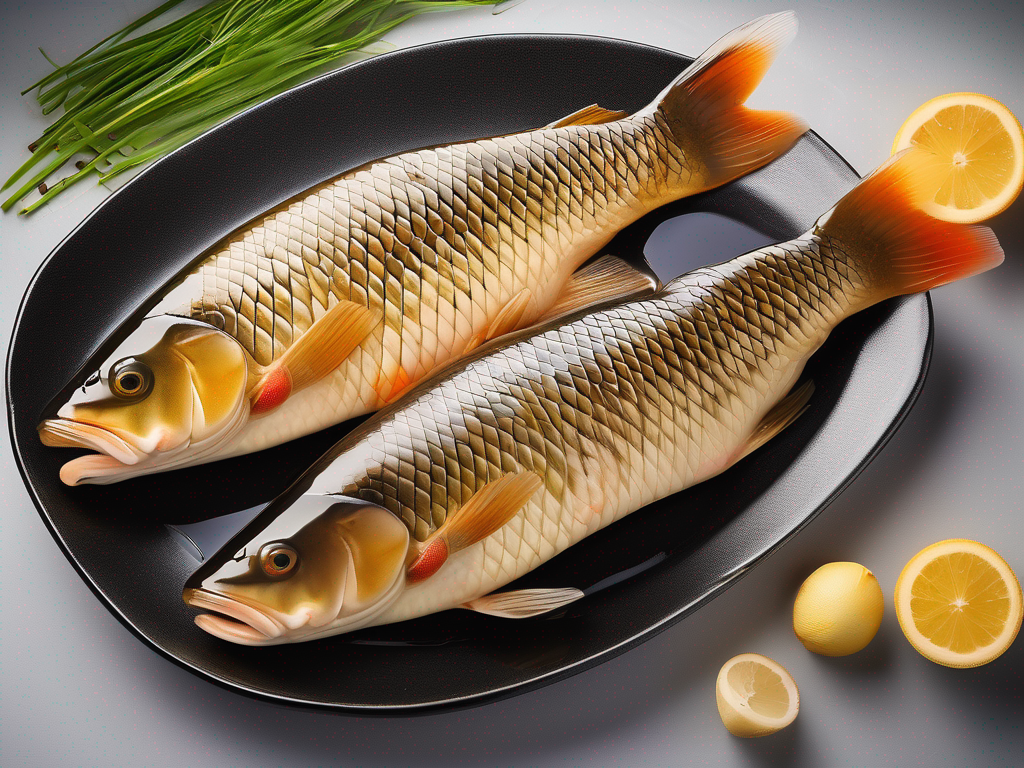
Signs that Common Carp has Gone Bad
Get Your Free Food Safety Cheat Sheet
30 most common foods with instant answers. Print it and stick it on your fridge—completely free!
Signs that Common Carp has Gone Bad
Common carp is a popular freshwater fish known for its mild, sweet flavor. Whether you catch it yourself or purchase it from a store, it's essential to know how to tell if common carp has gone bad to avoid foodborne illnesses. In this blog post, we will discuss the signs that indicate common carp has spoiled and provide practical tips on how to store it safely. (Common carp)
How to Store Common Carp Properly
Before diving into the signs of spoilage, let's first discuss the proper way to store common carp to maximize its freshness and shelf life. Follow these guidelines:
-
Refrigeration: If you plan to consume the common carp within a few days, store it in the refrigerator. Place the fish in an airtight container or wrap it tightly in plastic wrap to prevent exposure to air and odors.
-
Freezing: To extend the shelf life of common carp, you can freeze it. Wrap the fish in moisture-proof and airtight packaging, such as freezer bags or vacuum-sealed bags, to prevent freezer burn.
-
Temperature: Keep the refrigerator temperature at 40°F (4°C) or below to slow down bacterial growth. If freezing, set the freezer temperature to 0°F (-18°C) or lower.
-
Use-by Date: If you purchased the common carp from a store, check the use-by date on the packaging and consume the fish before it expires.
Signs that Common Carp has Gone Bad
Now, let's explore the signs that indicate common carp has spoiled:
1. Foul Odor
- Fresh common carp should have a mild, briny smell of the sea. If you detect a strong, fishy odor that is unpleasant or sour, it is a sign that the fish has gone bad.
2. Slimy Texture
- A fresh common carp should have firm flesh and a slightly slippery texture. If the fish feels excessively slimy or sticky to the touch, it is likely spoiled.
3. Discoloration
- Check the color of the common carp. Fresh fish typically has a vibrant color, such as pink or orange for carp. If you notice any gray or brown patches, it indicates spoilage.
4. Dull Eyes
- The eyes of a fresh common carp should be clear and bright. Cloudy or sunken eyes are a sign that the fish is no longer fresh.
5. Soft Flesh
- Press the flesh of the common carp gently with your finger. Fresh fish should spring back when touched. If the flesh leaves an indentation or feels mushy, it is past its prime.
6. Off Taste
- Trust your senses when it comes to detecting spoilage. If the common carp tastes off, bitter, or rancid, it is best to discard it to avoid foodborne illness.
Safety Tips for Handling Common Carp
In addition to recognizing the signs of spoilage, here are some safety tips for handling common carp:
- Always wash your hands thoroughly with soap and water before and after handling raw fish to prevent cross-contamination.
- Use separate cutting boards, utensils, and surfaces for raw fish to avoid contaminating other foods.
- Cook common carp to an internal temperature of 145°F (63°C) to kill any harmful bacteria.
- When thawing frozen common carp, do so in the refrigerator or under cold running water to prevent bacterial growth.
Conclusion
In conclusion, being able to identify the signs that common carp has gone bad is crucial for ensuring food safety and preventing foodborne illnesses. By following proper storage guidelines, recognizing spoilage indicators, and implementing safety tips, you can enjoy fresh and delicious common carp dishes with peace of mind. Remember, when in doubt, it's always better to err on the side of caution and discard spoiled fish. Stay informed, stay safe, and enjoy your common carp meals!
Remember, for the freshest common carp, visit [common carp](/food/common carp). (Common carp)
Authoritative Food Safety References
These agencies and university labs inform every tip and health precaution we publish.
USDA FoodKeeper – Cold Storage Guidelines
Official refrigerator, freezer, and pantry timelines maintained by the U.S. Department of Agriculture.
Visit USDA FoodKeeperFDA Produce Safety Rule & Grower Guidance
Field-to-fridge handling practices that prevent contamination of fruits, vegetables, and leafy greens.
Visit FDA Produce SafetyCDC Foodborne Illness Prevention Hub
Surveillance-backed guidance on pathogens, symptoms, and steps to reduce foodborne illness risk.
Visit CDC Food SafetyUC Davis Postharvest Technology Center
University research detailing optimal storage atmospheres for produce after harvest.
Visit UC Davis PostharvestPenn State Extension – Home Food Preservation & Safety
Peer-reviewed extension bulletins on safe canning, chilling, and reheating practices.
Visit Penn State ExtensionGet Your Free Food Safety Cheat Sheet
30 most common foods with instant answers. Print it and stick it on your fridge—completely free! Want more? Upgrade to the complete guide with 70+ foods.
Scan your food directly and get instant safety info using our AI-powered camera feature.